Solar panels harness diffuse light in overcast conditions, ensuring electricity generation even without direct sunlight.
Basic Principles of Solar Energy Conversion
Solar energy conversion revolves around the fundamental process of transforming sunlight into usable electricity. This mechanism plays a pivotal role in promoting sustainable energy solutions, as it harnesses the abundant energy from the sun, a renewable resource. Let’s delve into its primary components:
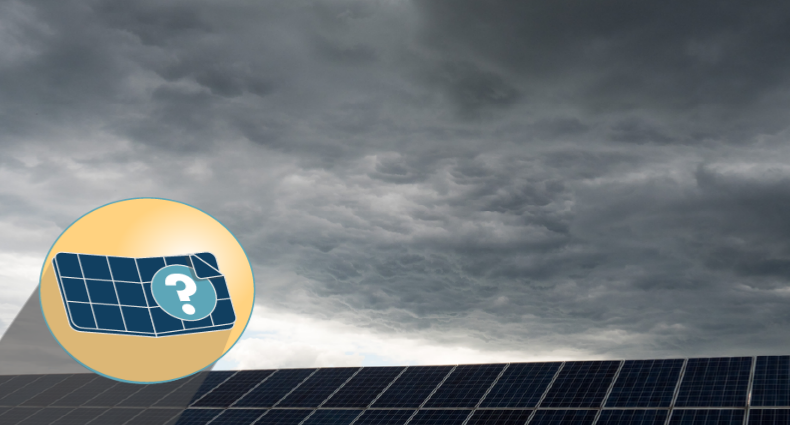
The Photovoltaic Effect
The photovoltaic (PV) effect is the underlying principle behind most solar energy conversion. At its core, it’s about generating a voltage (or a direct electric current) in a material upon exposure to light.
- Materials and Semiconductors: The most common material used in PV cells is silicon. When sunlight hits the silicon cells, it excites the electrons.
- Flow of Electrons: The excited electrons move through the material, producing an electric current. This current is harnessed and can be used to power homes, devices, and more.
- Difference in Potential: Solar cells have two layers, each with a different role. One side is designed to absorb photons, while the other facilitates the flow of electrons, creating an electric field.
Solar Cells and Modules
Solar panels are composed of multiple solar cells, which are the primary units converting sunlight into electricity.
- Solar Cell Structure: Each solar cell is typically made from silicon and has a positive and a negative layer, creating an electric field.
- From Cells to Modules: When multiple solar cells are connected together, they form a solar module. This module can function on its own or be combined with others to form a solar panel.
- Harnessing the Energy: Once the energy is captured by the cells, it’s funneled through a series of connected cells in a panel. This collective energy is then channeled through an inverter, converting it into a type of electricity that can be used in homes.
Sunlight Spectrum and Solar Panel Efficiency
The sun emits energy in a spectrum of light, and not all parts of this spectrum are equally useful for solar energy conversion.
- Visible Light and Beyond: The sunlight spectrum comprises ultraviolet (UV), visible light, and infrared (IR). Solar panels mainly utilize the visible light spectrum for energy conversion.
- Efficiency Concerns: Not all the sunlight hitting a solar panel is converted to electricity. Factors such as angle of incidence, temperature, and the quality of the solar cells determine the efficiency of the panel.
- Optimizing for the Spectrum: Advanced solar panels are designed to harness more from the UV and IR parts of the spectrum, pushing the boundaries of what’s achievable in terms of solar energy conversion.
With these principles, the world moves a step closer to a more sustainable future, as the potential of solar energy continues to be harnessed and optimized.
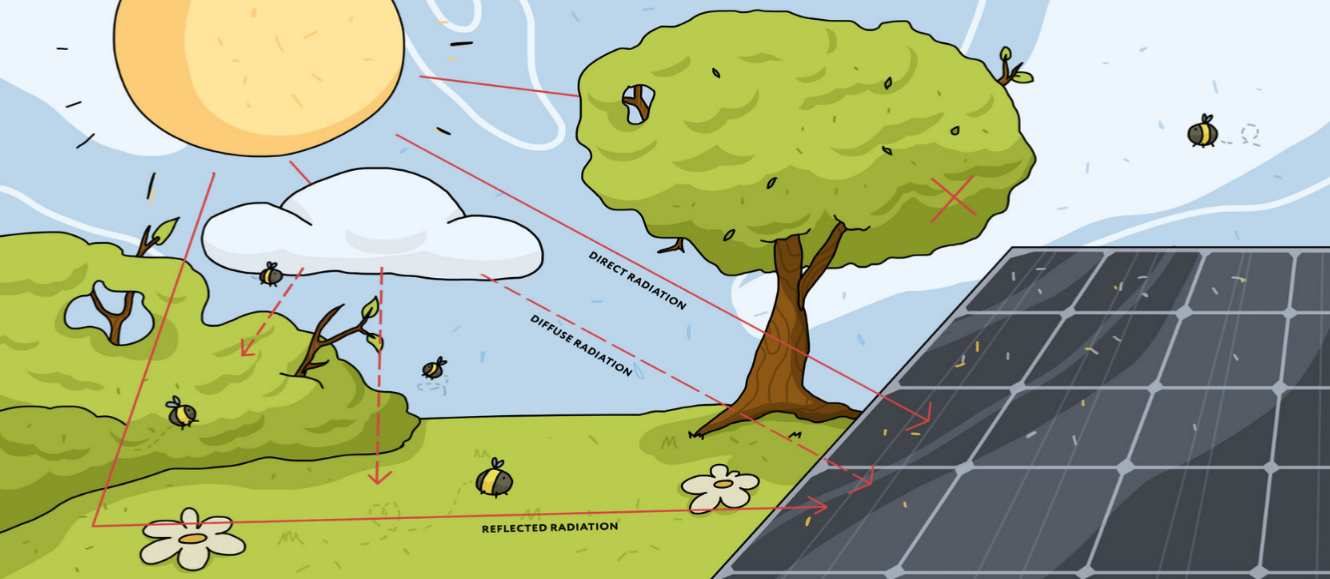
Performance in Overcast Conditions
Solar panels, contrary to common misconception, don’t exclusively rely on direct sunlight. They can also capture energy from diffuse light sources, such as on cloudy days. Performance in overcast conditions varies based on several factors. Let’s explore them:
Diffuse Light and Solar Panel Absorption
Diffuse light arises from sunlight scattering due to clouds, fog, or other atmospheric conditions. Although it isn’t as potent as direct sunlight, solar panels can still harness this scattered energy.
- Understanding Diffuse Light: When the sky is cloudy, sunlight gets scattered in multiple directions. While some of it reflects back into space, a significant portion disperses throughout the atmosphere, reaching solar panels from different angles.
- Solar Panel Design: Modern solar panels are designed to capture as much light as possible. Some designs, for instance, have a textured surface that allows capturing light from various angles, enhancing their ability to absorb diffuse light.
- Efficiency Rates: Despite being able to utilize diffuse light, panels’ efficiency drops as compared to direct sunlight. However, they can still produce between 10% to 25% of their nominal capacity, depending on the density of the cloud cover.
Factors Affecting Performance in Cloudy Weather
Several factors come into play when determining a solar panel’s efficiency in overcast conditions.
- Cloud Density: Lighter cloud cover will allow more sunlight to penetrate, resulting in better solar energy conversion than with denser cloud formations.
- Solar Panel Technology: The type of solar cell – for instance, monocrystalline, polycrystalline, or thin-film – can influence performance in overcast conditions. Monocrystalline cells, known for their higher efficiencies, often outperform their counterparts on cloudy days.
- Angle and Positioning: The orientation of a solar panel can affect its ability to capture diffuse light. Panels that are adjustable and can tilt toward the most abundant light source have an advantage on overcast days.
Comparing Output on Sunny vs. Cloudy Days
The contrast in solar panel performance between sunny and cloudy days is evident, but it’s essential to know the specifics.
- Data-Driven Approach: Observations show that, on average, solar panels produce about 10% to 25% of their maximum output on cloudy days. This number can vary based on the factors mentioned above.
- Importance of Location: In regions where overcast days are prevalent, such as the Pacific Northwest in the US, solar panel installations might integrate energy storage solutions or combine with other renewable energy sources to ensure consistent power supply.
- Overall Efficiency: Despite reduced output on cloudy days, the cumulative yearly output in many regions remains significant, making solar installations a worthwhile investment in diverse climatic conditions.
By understanding these dynamics, one can set realistic expectations and make informed decisions about solar panel installations in various regions and weather patterns.
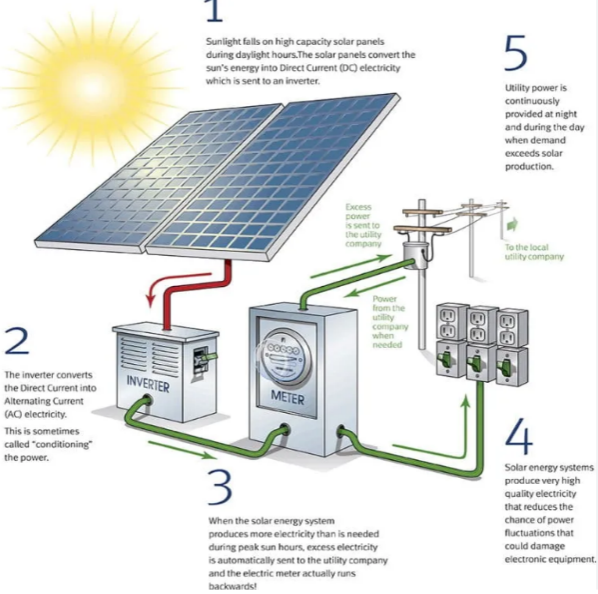
Solar Panels at Night
While solar panels shine during the day by harnessing the sun’s energy, the dynamics change at night. To understand the performance of solar panels after sunset and how homeowners can still benefit from solar energy, let’s delve deeper into these nocturnal scenarios.
Why Solar Panels Don’t Generate Electricity at Night
Solar panels depend on sunlight to produce electricity. Without this source of energy at night, electricity generation halts.
- Absence of Sunlight: The primary reason is straightforward; solar panels require sunlight to produce energy. In its absence during nighttime, they stay dormant.
- Photovoltaic Principle: Solar panels operate on the photovoltaic principle, where sunlight photons dislodge electrons in the solar cell, creating an electric current. No photons mean no dislodged electrons, which results in no electricity generation.
- Standby Mode: While not actively producing electricity, solar panels are in a standby mode at night, ready to commence energy production as soon as the first light hits them in the morning.
Energy Storage Solutions for Night-time Use
While solar panels don’t produce energy at night, there are mechanisms to store daytime energy for nighttime use.
- Battery Storage Systems: Homeowners often use battery storage solutions like the Tesla Powerwall or similar products. These batteries store excess energy produced during the day, providing electricity to the home during the night or cloudy days.
- Capacity and Duration: The capacity of the battery storage system determines how long a household can run on stored solar energy. Some advanced systems can power a home for several days on stored energy alone.
- Cost and ROI: The initial investment for battery storage systems can be high, but the return on investment becomes evident when one considers reduced electricity bills and potential tax incentives.
The Role of Net Metering
Net metering allows homeowners to benefit from the excess energy they produce, even when their panels aren’t actively generating electricity.
- A Two-way Street: Net metering essentially turns the electricity meter into a two-way street. When a household’s solar system produces more electricity than the home consumes, the excess energy goes back to the grid, causing the electricity meter to run backward.
- Credits and Billing: Homeowners receive credits for the electricity they feed back into the grid. These credits offset the electricity they consume from the grid when their solar panels aren’t producing, such as at night.
- Benefits to the Grid: Beyond homeowners, net metering benefits the broader electric grid. The excess solar energy fed back into the grid can be used by other consumers, reducing the demand on power plants during peak times.
- Regulations and Policies: The availability and specifics of net metering depend on local regulations and utility companies. It’s essential for homeowners to be aware of their region’s policies to maximize the benefits.
Through a combination of energy storage solutions and practices like net metering, solar energy remains a viable and efficient option, even when the sun isn’t shining.
Innovations in Low-light Solar Technologies
As the demand for renewable energy grows, so does the imperative to harness solar power even in less-than-ideal light conditions. Innovations in low-light solar technologies aim to capture more energy from the sun, even on cloudy days or in low-light environments. Let’s explore some of these cutting-edge advancements.
Tandem Solar Cells
Tandem solar cells are an exciting advancement in solar technology, designed to capture a broader spectrum of sunlight than traditional cells.
- Dual Layers: These cells utilize two (or more) layers of photovoltaic materials. Each layer is tailored to capture different parts of the sunlight spectrum, maximizing energy absorption.
- Enhanced Efficiency: By harnessing more of the sunlight spectrum, tandem solar cells often achieve higher efficiencies than traditional single-junction cells. Some laboratory-tested tandem cells have approached or even surpassed the 30% efficiency mark.
- Materials in Play: Common materials used in tandem cells include perovskite and silicon. The combination aims to leverage the strengths of each material.
Bifacial Solar Panels
Bifacial solar panels can capture sunlight from both their front and back sides, enhancing energy production potential.
- Double-Sided Capture: Unlike traditional panels that only capture sunlight on one side, bifacial panels absorb light that hits their rear side, often reflected off surfaces like the ground or nearby structures.
- Placement and Efficiency: Bifacial panels are especially efficient when placed on reflective surfaces, like white rooftops or specialized ground covers. In the right conditions, they can generate up to 20% more energy than conventional panels.
- Growing Popularity: With the drop in production costs and the evident efficiency gains, bifacial solar panels are gaining popularity in both residential and commercial solar installations.
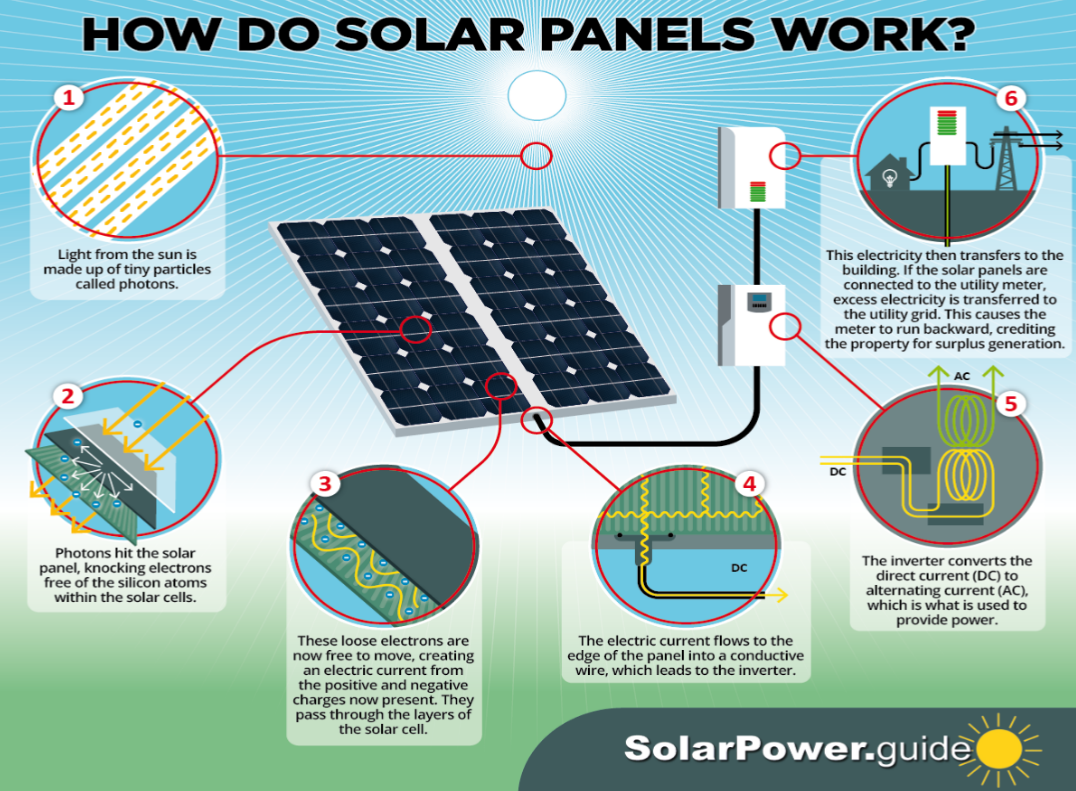
Low-light Photovoltaic Materials
The quest for materials that can efficiently convert low-light into electricity is ongoing, with some promising contenders emerging.
- Thin-Film Technology: Thin-film solar cells, made from materials like amorphous silicon, cadmium telluride, or copper indium gallium selenide, are known for their flexibility and capacity to function in low-light conditions.
- Organic Photovoltaics: Made from organic (carbon-based) materials, these cells are lightweight and flexible. While traditionally less efficient than silicon-based cells, advancements in organic photovoltaics are enhancing their low-light performance.
- Quantum Dots: These are nano-sized semiconductors that can be tuned to absorb specific parts of the sunlight spectrum. Quantum dots hold the potential to boost solar cell efficiency significantly, especially in diffused light conditions.
The innovations in low-light solar technologies underscore the potential of solar energy. As research continues, and these technologies mature, solar installations will become even more efficient and versatile, paving the way for a brighter, more sustainable future.
Impact of Seasonal Changes on Solar Panel Efficiency
The seasons bring with them varying durations of daylight, shifts in the sun’s angle, and different weather conditions, all of which influence solar panel efficiency. To truly optimize solar energy systems year-round, understanding these seasonal changes and their effects is essential. Here’s a closer look:
Winter Months and Reduced Sunlight Hours
Shorter days during the winter months mean fewer hours of sunlight for solar panels to convert into electricity.
- Limited Daylight: As the Earth tilts away from the sun during winter (in the respective hemisphere), the duration of daylight reduces. This natural phenomenon results in fewer hours for solar energy generation.
- Solar Intensity: Not only are the days shorter, but the sun’s intensity can also be less potent due to the lower angle at which it shines. As a result, even during daylight hours, the energy yield might be lower than in summer months.
- Compensating for Shorter Days: To counteract the reduced daylight hours, solar installations in regions with pronounced seasonal changes often have a higher number of panels or combine with other energy sources, ensuring consistent energy availability.
Angle and Positioning for Optimal Winter Absorption
The sun’s trajectory changes with the seasons, which can affect how it hits solar panels.
- Optimal Tilt: Adjusting the tilt of solar panels according to the season can help maximize their exposure to sunlight. In the winter, panels in the northern hemisphere, for example, should ideally be tilted more steeply to capture the low-angled sun.
- Trackers: Some solar installations use tracking systems that adjust the angle of the panels throughout the day. These trackers can be especially beneficial during winter, ensuring that panels are always oriented for maximum light absorption.
- Fixed Installations: For fixed installations, it’s vital to consider the average sun angle year-round. Tools and solar calculators help determine the best angle for installation to optimize energy yield across seasons.
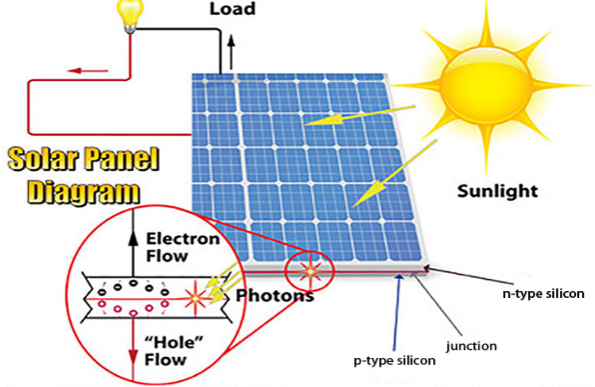
Snow Cover and Its Effects on Solar Panel Performance
Snow can influence solar panel performance in multiple ways, both positive and negative.
- Reflection and Albedo: Fresh snow has a high albedo, meaning it reflects a significant portion of sunlight. This reflected light can benefit nearby solar panels, especially bifacial ones, by providing an additional source of light.
- Obstruction by Snow: Accumulated snow on solar panels obstructs them from capturing sunlight. However, the sleek design of most panels allows snow to slide off easily, especially if the panels are installed at an angle.
- Temperature Impact: Colder temperatures can boost solar panel efficiency since they operate more efficiently in cooler conditions. Yet, this boost might be offset by the reduced daylight hours and potential snow cover.
- Preventive Measures: Regular maintenance, such as clearing off snow and ensuring panels are free from obstructions, helps maintain optimal performance during the winter months.
Seasonal shifts underscore the importance of understanding local climate patterns when designing and installing solar systems. With proper knowledge and a bit of preparation, solar panels can remain a reliable energy source throughout the year.
Backup Systems and Hybrid Solutions
Harnessing solar energy is a step towards sustainable living, but ensuring its consistent availability becomes crucial. To tackle the intermittent nature of solar power, especially during cloudy days, nighttime, or seasons with reduced sunlight, integrating backup systems and hybrid solutions has become an industry norm. These systems not only guarantee continuous power supply but also enhance the resilience and reliability of renewable energy infrastructures.
Battery Storage Systems
Storing excess solar energy during peak hours and using it during off-peak times or when solar generation is low is the crux of battery storage systems.
- How They Work: Battery storage systems store the surplus energy generated by solar panels. When the panels aren’t producing enough electricity, the stored energy in the batteries is used to power the connected systems.
- Popular Options: The Tesla Powerwall is a well-known example, but there are numerous battery solutions available, ranging from household to industrial scales.
- Advantages: Battery storage allows for energy independence, especially during power outages or peak pricing times, ensuring a constant power supply and potential savings.
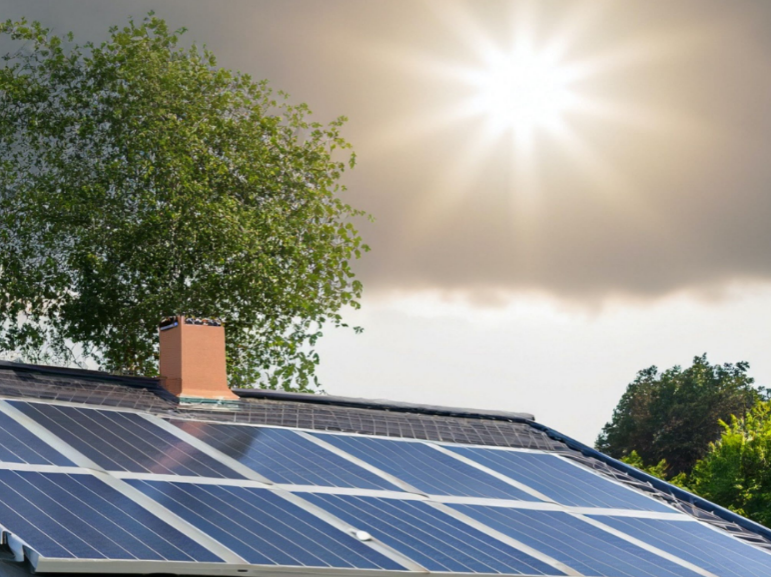
Grid-tied Solar Systems
Integrating solar installations with the local electricity grid offers advantages in terms of backup and financial incentives.
- Balancing Act: When solar panels produce more energy than a home or facility uses, the excess can be fed back into the grid. Conversely, when the panels produce less than needed, electricity can be drawn from the grid, ensuring an uninterrupted power supply.
- Financial Benefits: Many regions offer net metering, where homeowners receive credits for the surplus energy they feed into the grid. These credits can offset costs when drawing power from the grid, often resulting in reduced electricity bills.
Integration with Wind or Hydro Energy
Combining solar energy with other renewable sources, such as wind or hydro, can lead to more consistent energy production.
- Complementary Nature: Wind patterns might be stronger at night or during seasons when solar output is lower. Thus, having a wind turbine in conjunction with solar panels can ensure a more consistent energy supply.
- Hybrid Systems: In areas near water sources, integrating hydroelectric power can further stabilize the energy output. The flow of water can generate power during times when neither wind nor solar is optimal.
- Enhanced Reliability: Integrating multiple renewable energy sources reduces reliance on any single energy type, ensuring a more stable and consistent power output throughout varying conditions.
Incorporating backup systems and hybrid solutions into solar installations ensures that as we transition towards a more sustainable future, reliability and consistency remain at the forefront.
